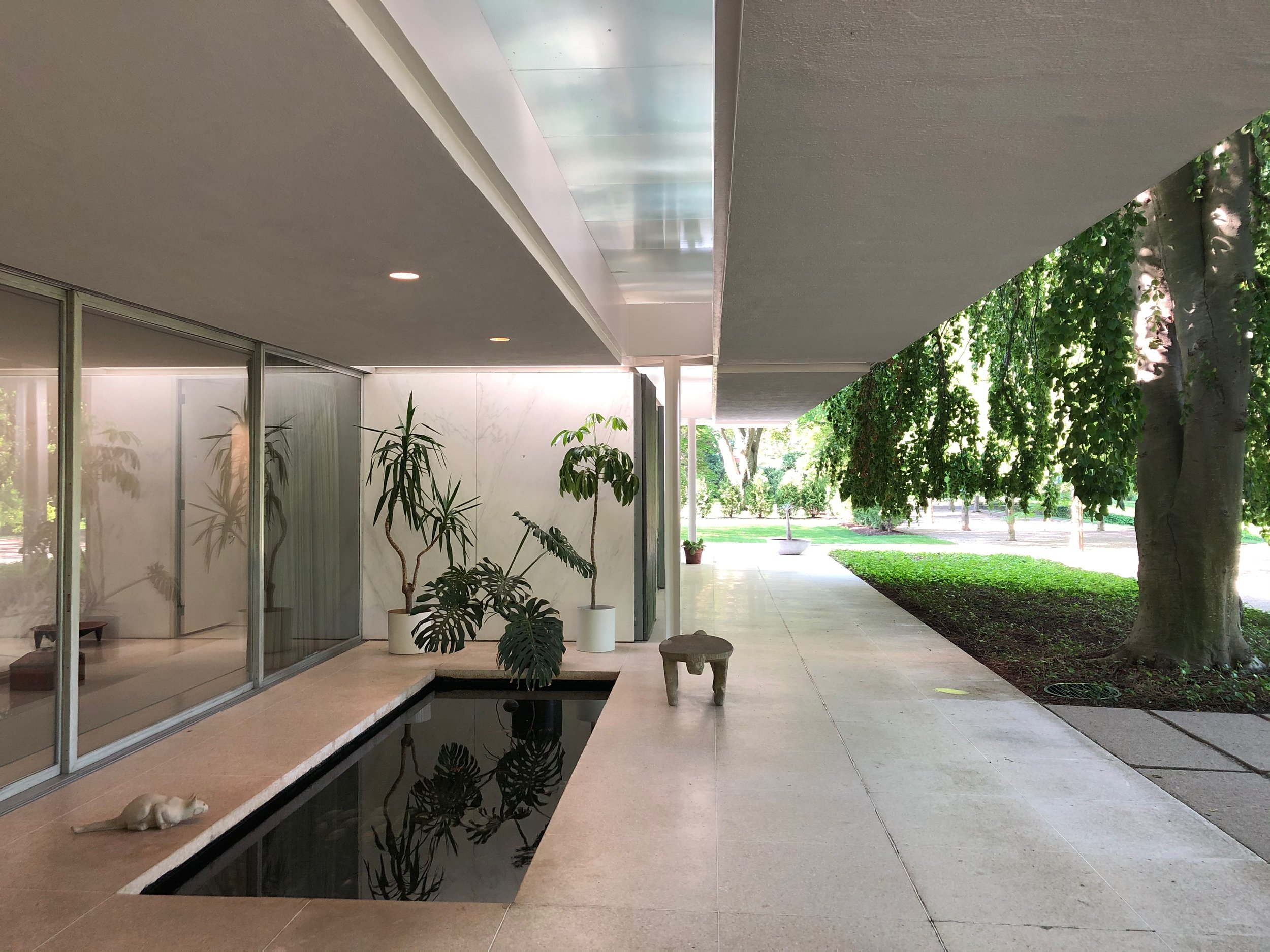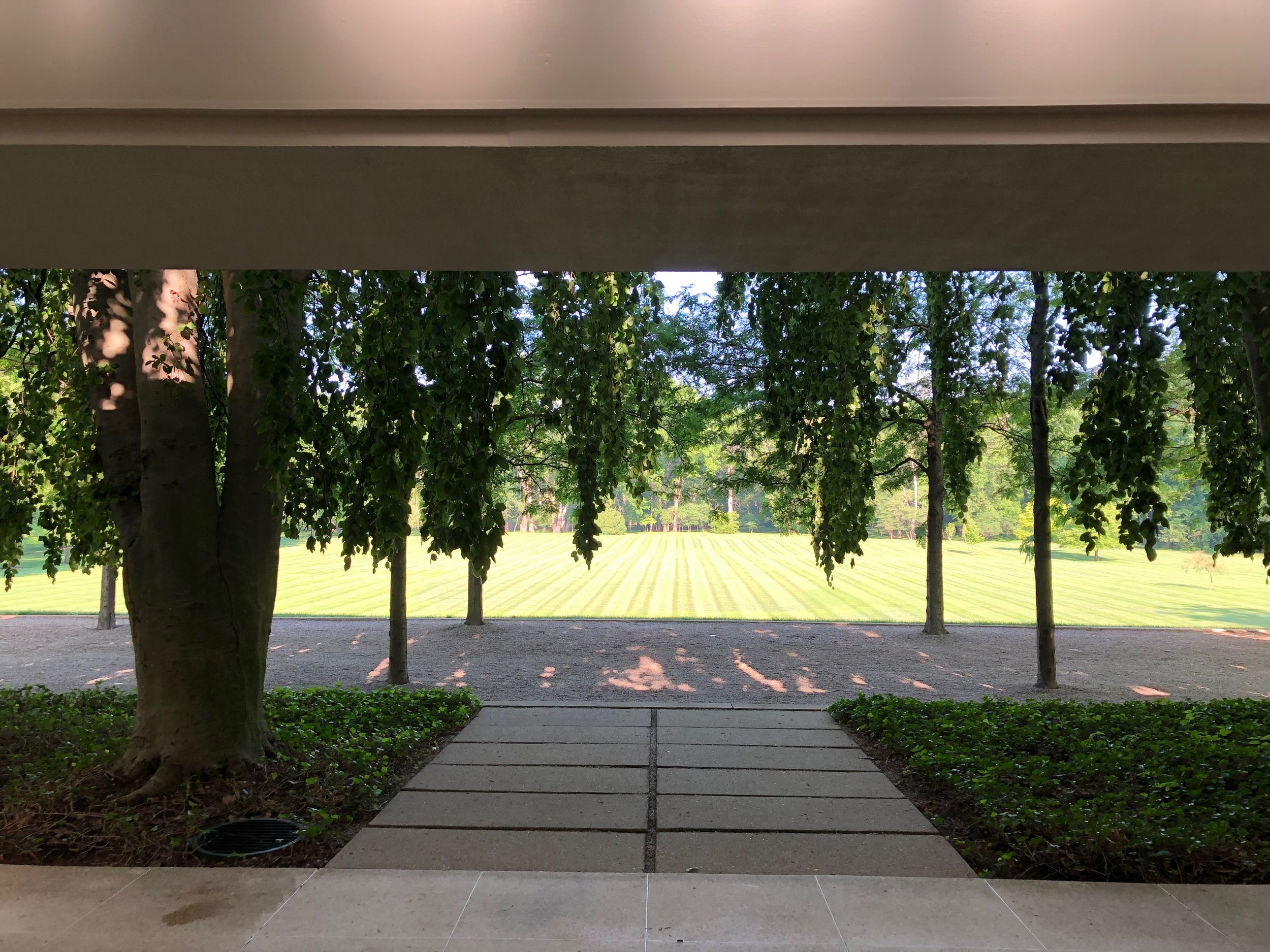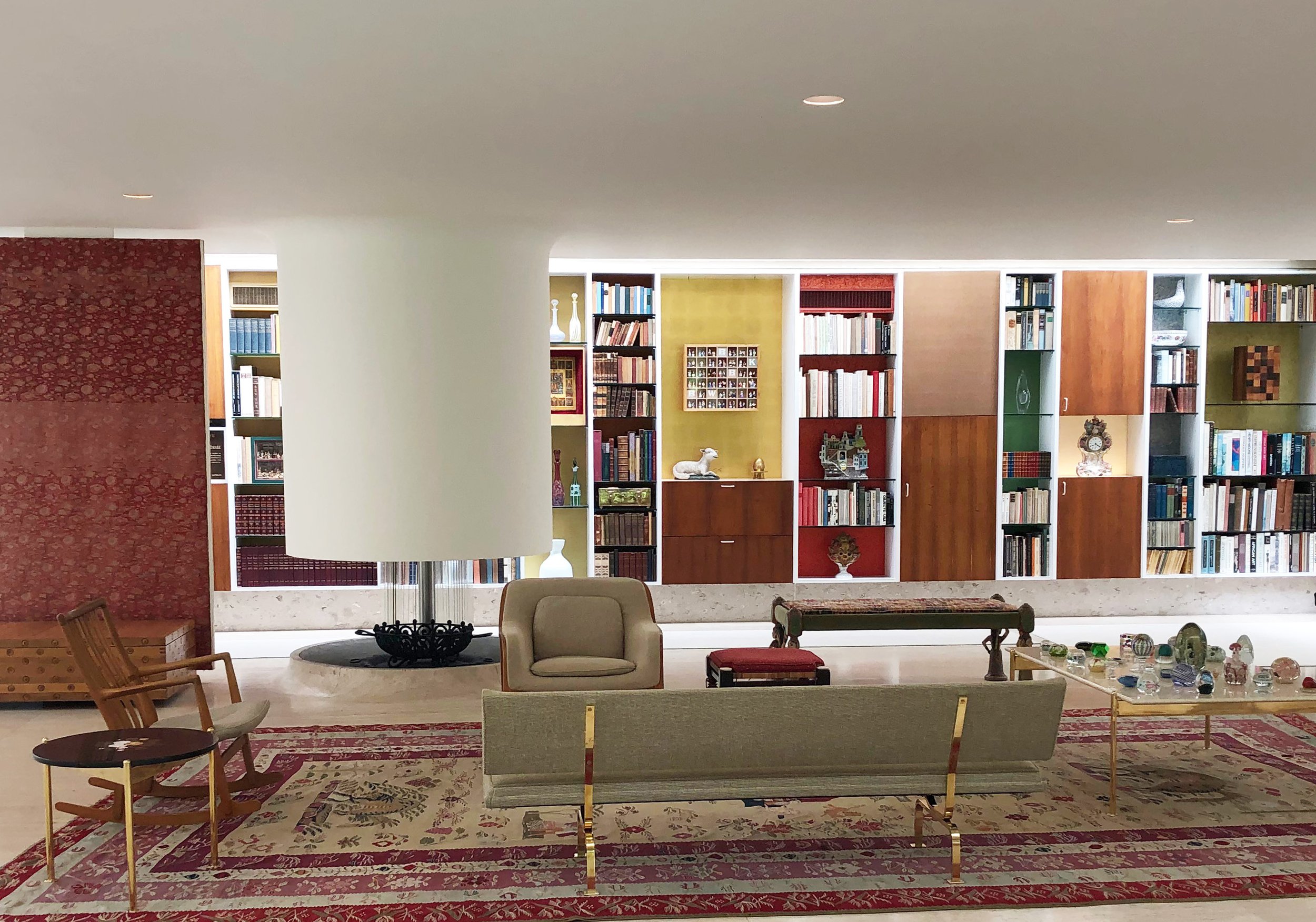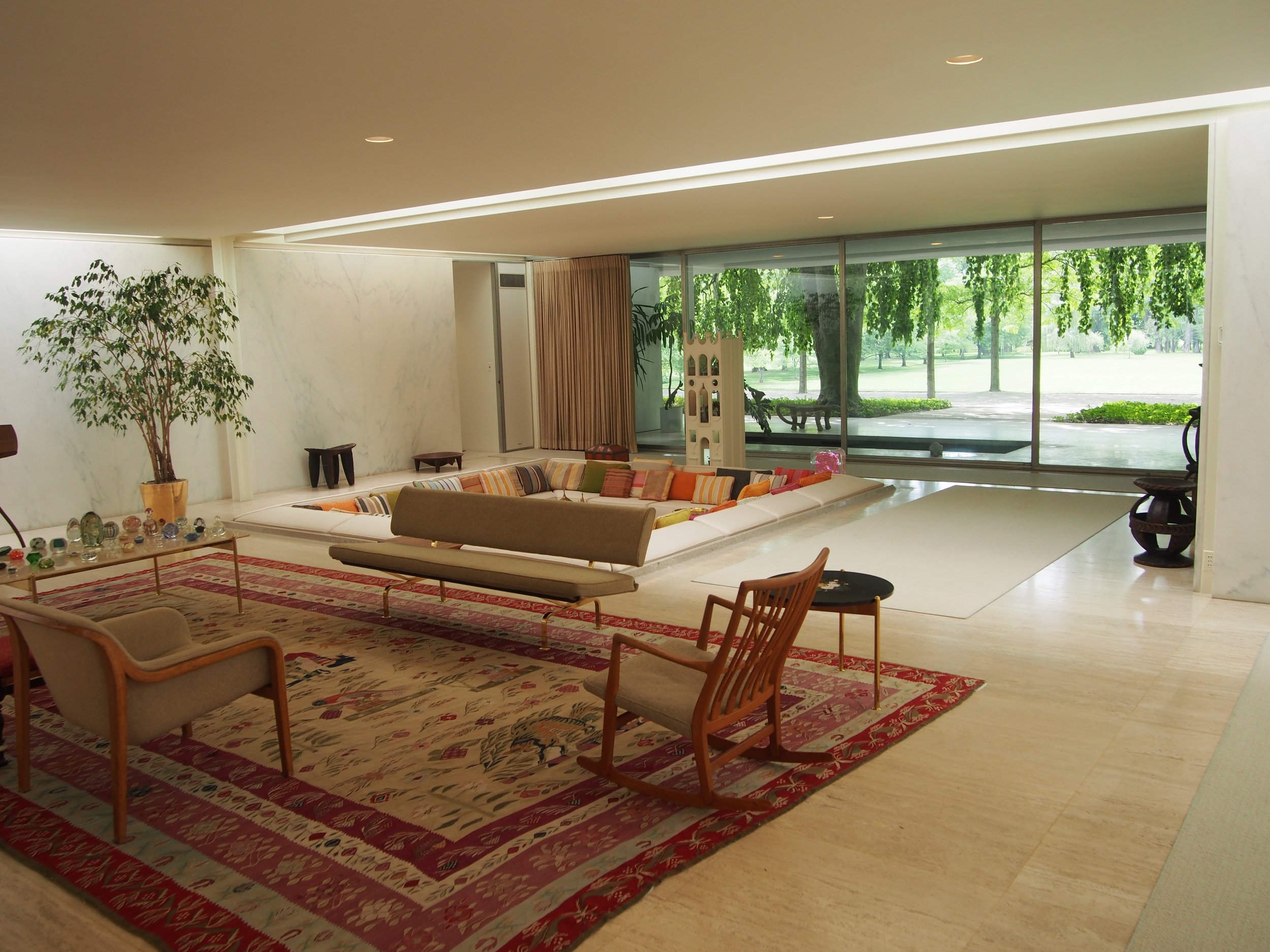MILLER HOUSE AND GARDEN, Columbus, Indiana
The Miller House and Garden is one of the most highly regarded examples of mid-century Modernism in the United States. It is considered the most refined, fully-realized work of Modern domestic architecture, interiors, and landscape, designed by Eero Saarinen (1910–1961), Alexander Girard (1907–1993), and Daniel Urban Kiley (1912–2004), respectively. In 2000, the Miller House and Garden became the first National Historic Landmark to receive this honor while still occupied by its original owners.
In 2009, the entire property, along with many of the original furnishings and artworks, were donated to Newfields (formerly the Indianapolis Museum of Art), by four of the five surviving Miller children. The House and Garden were designed for durability. Nonetheless, they have required ongoing maintenance, investment and even adaptation by the Miller family and, more recently, Newfields. The site enjoys a very high level of integrity yet, nearly six decades after completion, some of the site’s materials and systems are nearing the end of their functional service life. This represents both a significantly greater level of expenditure and an opportunity to consider enhancements for the sustainability of the site.
In 2019, Newfields partnered with PennPraxis to submit an application to the Getty Foundation’s Keeping It Modern grant initiative. MH&G was one of ten projects selected by the Getty that year from around the world for preparation of Conservation Management Plans. Pamela Hawkes was project leader, in collaboration with Randall F. Mason of PennPraxis and Michael C. Henry of Watson Henry Associates; LandCollective and Building Conservation Associates also played key roles.
The goal of the CMP was to develop an overarching conservation strategy for the house, interior, and grounds of the MH&G that balances strict preservation with adaptation, moves beyond short-term maintenance projects to plan, budget, and fundraise for cyclical maintenance and capital projects in the future. It will also ensure that the property remains relevant to diverse audiences and to Newfields’ mission to “enrich lives through exceptional experiences with art and nature.”




